I got a new toy and now I’ll talk about what it was like getting this thing going on my desktop machine running the penguin software nerds online love/hate so much.
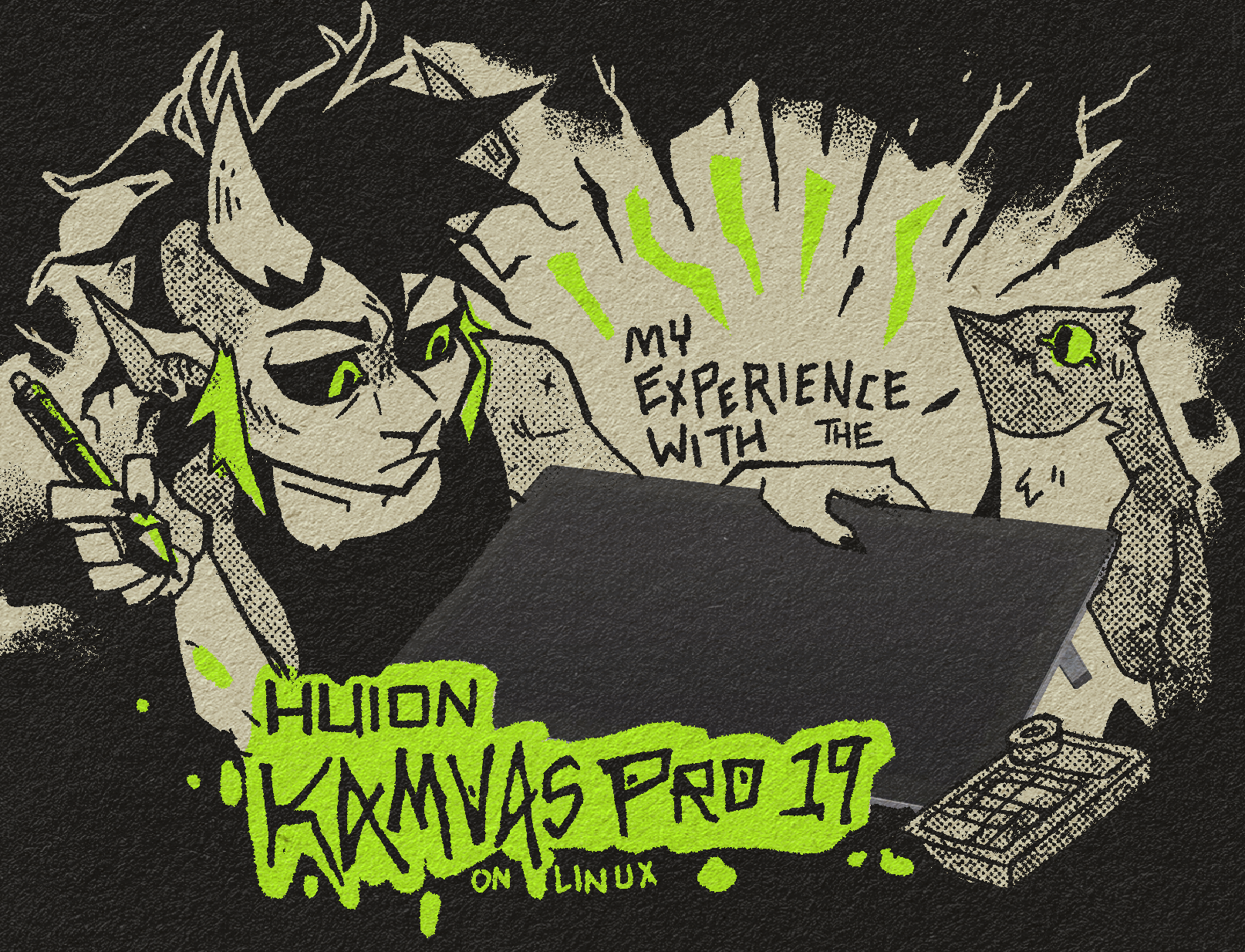
CONTENTS
If This Was a Cooking Blog, You’d [Understandably] Skip This Part
My budget build gaming tower became another art machine, because everything I use eventually becomes one in due time. What makes this one extra fun to me though [aside from it handling simple Blender projects without too much fuss] is that this is my first practical-to-me Linux machine. That is, I could actually do my work reliably on it instead of ultimately switching back to Windows or OS X.
On this rig, I plan on doing both 3D and 2D work. In order for me to do that 2D work, I needed a pen display. For me Wacom is king, but I don’t have Wacom cash. I do, however, have Huion cash. My past experiences with cheaper tablets have been. Well, you could tell where they had to cut some major corners to get to that low price. Peers have sworn to me that Huion’s not like the other girls, and with the Kamvas Pro 19 featuring a driver for Linux, I figured I’d give it a shot. Worse case I return the thing and pine for a while longer.
Unboxing and First Impressions
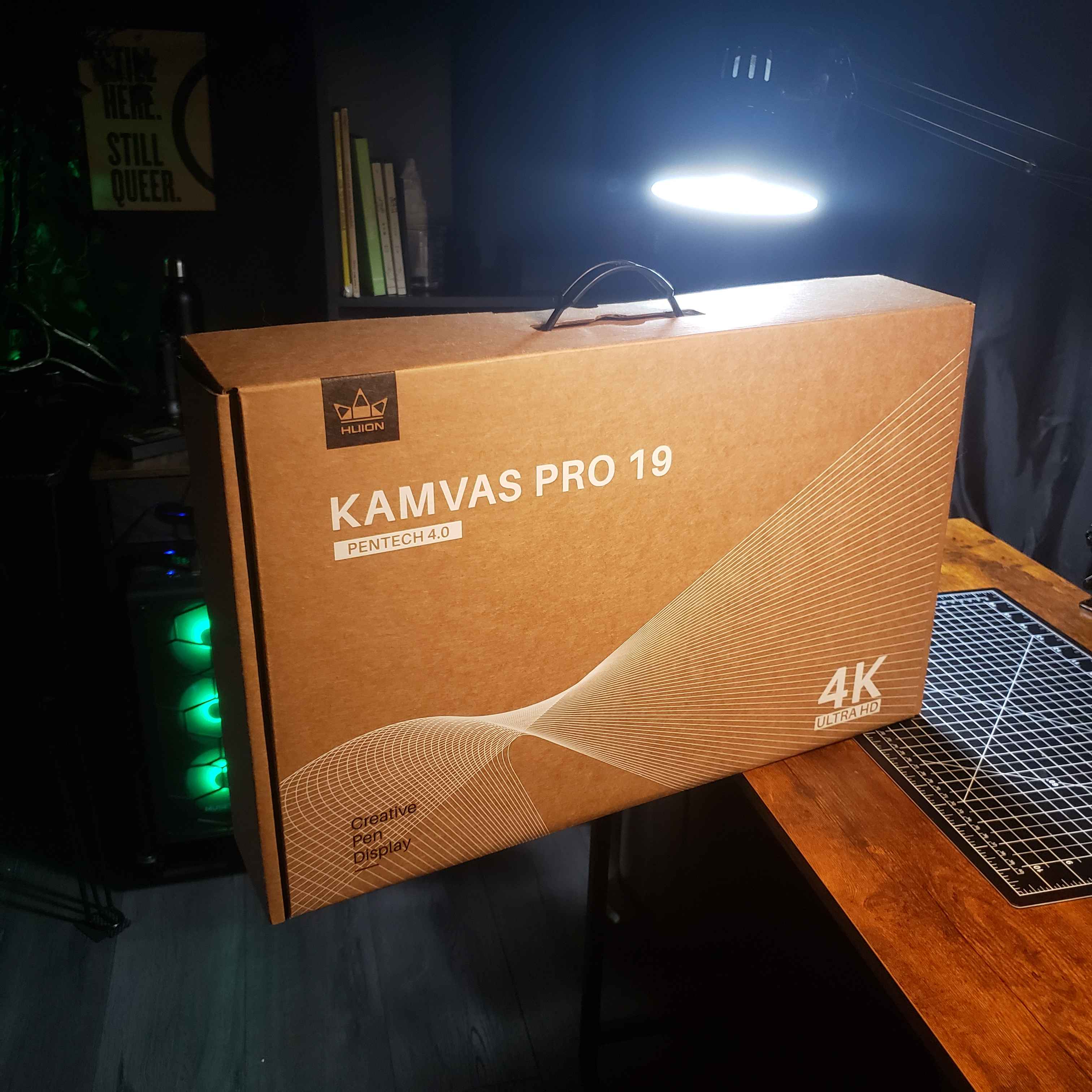
The box sure is a box, and the box is nice with its boxy characteristics and box-like, cardboard and foam rectangular prism functionality.
I went into this expecting the general build quality of the hardware to feel ok and serviceable but obvious it was built on a budget. Maybe not Mad Catz bad, but a step or two above that. To my surprise everything feels of quality [dare I say a hair more luxurious than some Wacom devices I’ve worked with in the past].
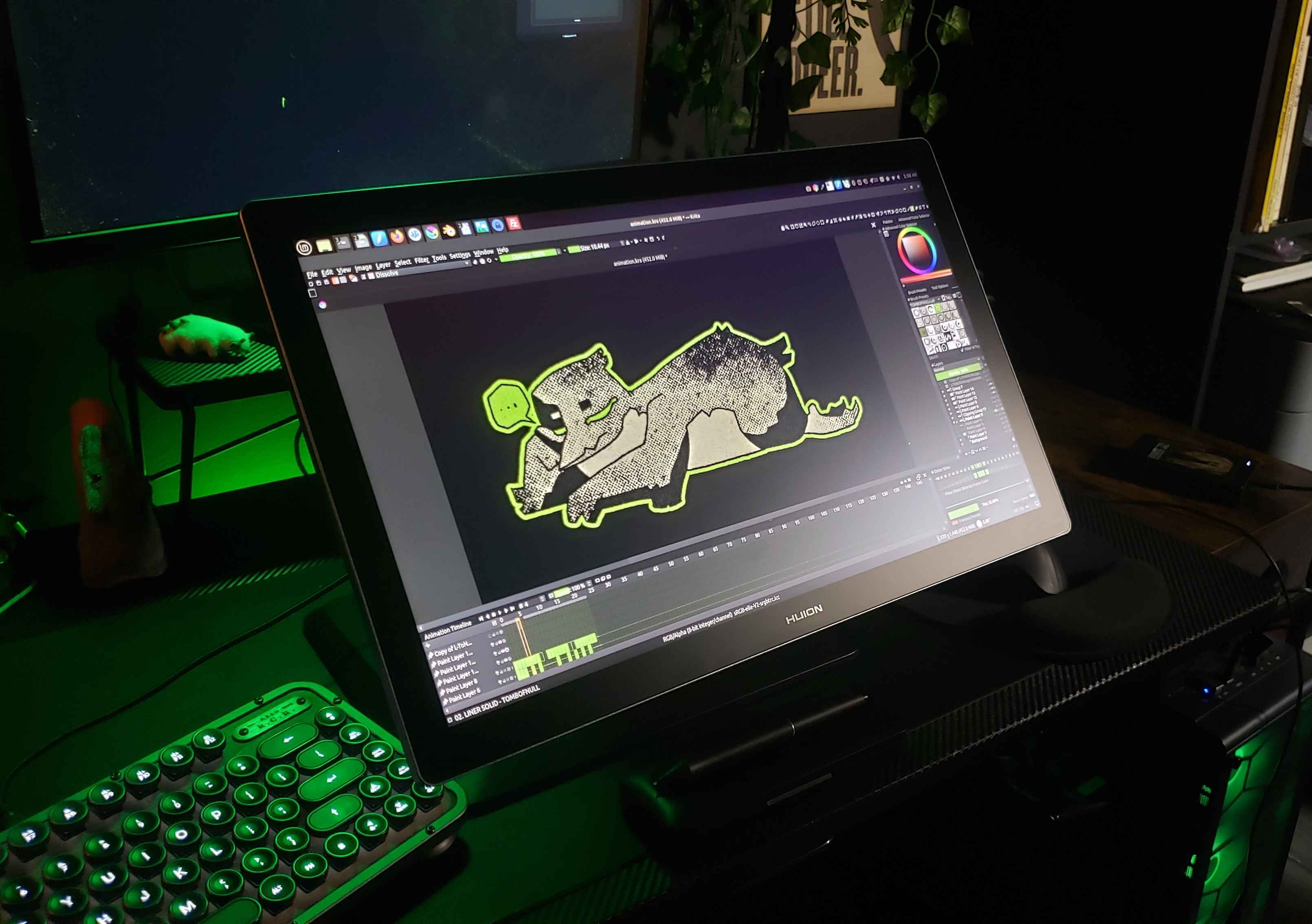
The display itself as a solid metal shell, the draw surface brandishes a satin finish, and the accessories don’t feel flimsy and creaky. Hell even the hand sock is the fanciest I’ve run into.
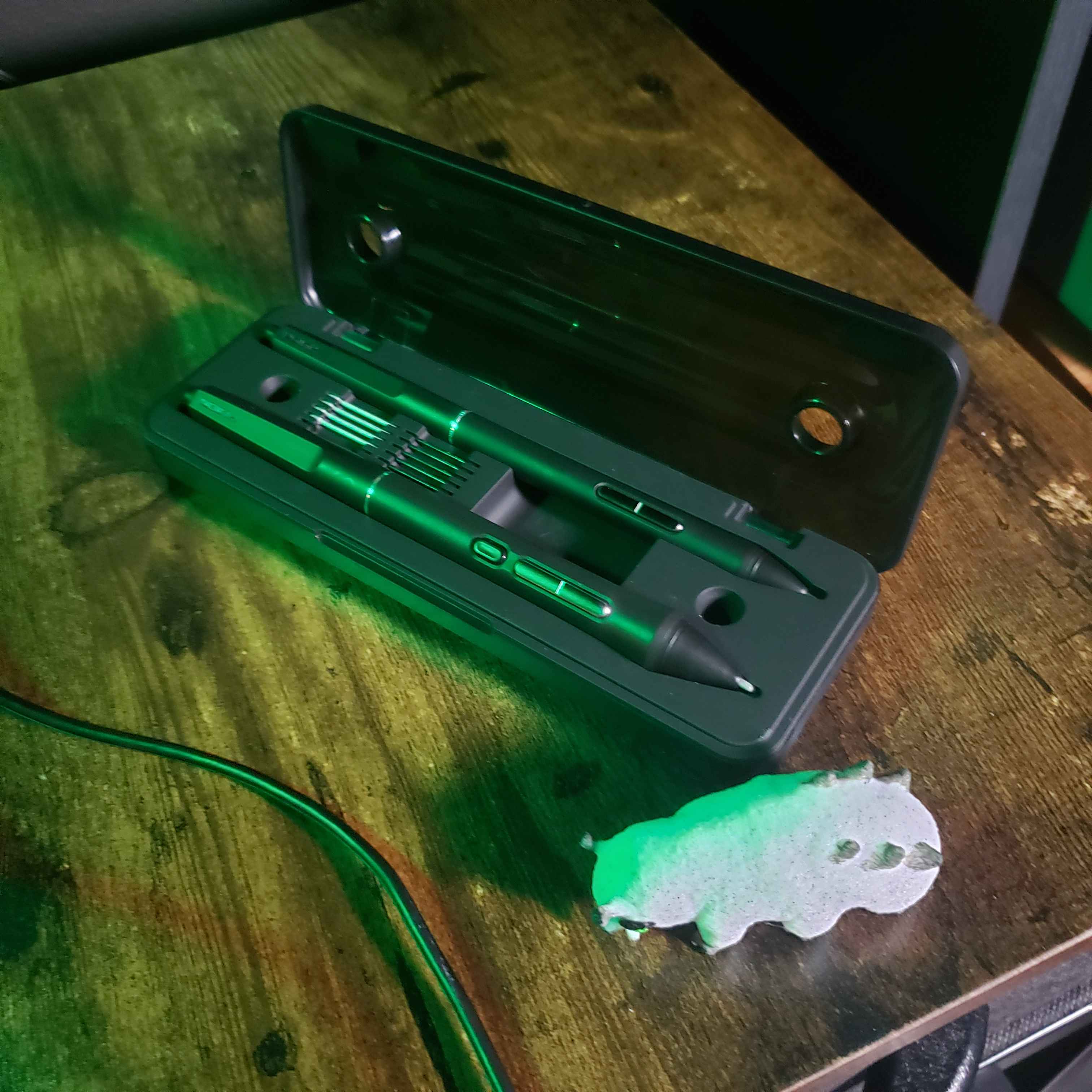 I am a little confused by the inclusion of two slightly different styli. For me that was a red flag going in—I’ve ran into several low quality pen displays that’ll include two styli for whatever reason—but while both are light, neither feel fragile.
I am a little confused by the inclusion of two slightly different styli. For me that was a red flag going in—I’ve ran into several low quality pen displays that’ll include two styli for whatever reason—but while both are light, neither feel fragile.
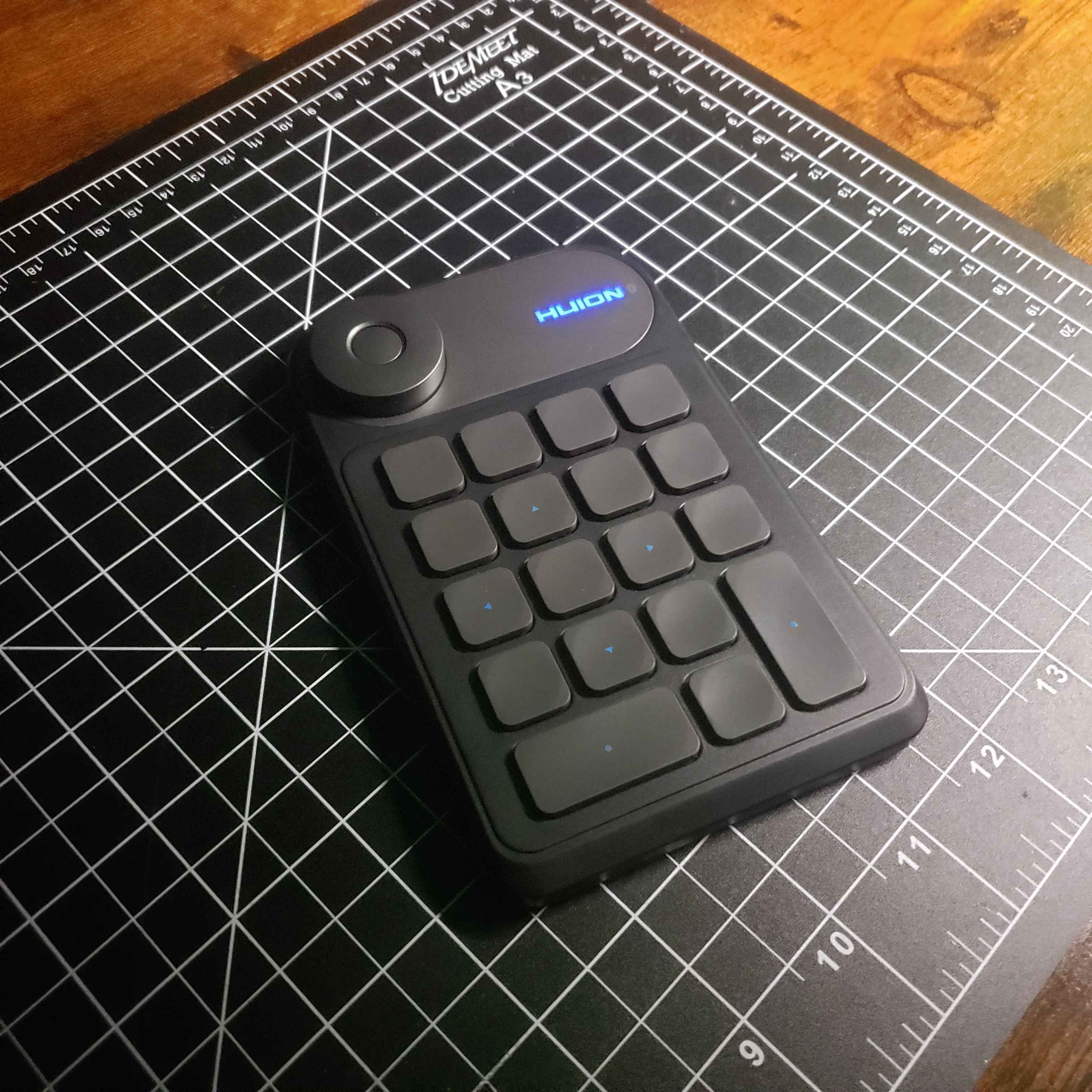
The extra toy that came with the bundle I went with was the Keydial Mini KD20, whose keys are membrane for sure but not gross and mushy. The dial also turns with ease with a satisfying tick and with enough resistance to let you hone in on the exact zoom or brush size you’d be looking for. [From the future: oh man past me, you're gonna be so sad lol]
Setting Up
Hardware
Very straightforward for a tower PC: just plug stuff in and you’re good. Expect some cable spaghetti but nothing unmanageable.
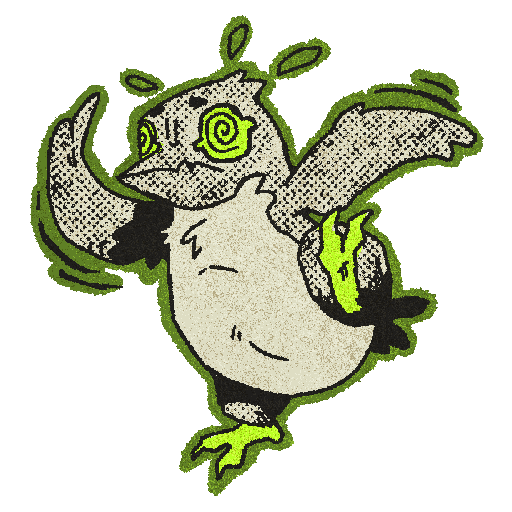
Software
Yyyyyyeah this was much fiddlier than I had expected. Downloaded the driver, installed the package, ran into issues actually finding the program but did eventually find it. For whatever reason it was shy about showing up where I usually expected something like that to be. The driver software looks fine, but doesn’t feel as polished as the Windows version of the same driver. A weird issue: the driver stops working when it is minimized for too long. My work around has been to leave it unmimimize.
Note:
- Be sure to that the display/active area settings are mapped correctly if you are using multiple monitors. Pen Display > Working Area
Keydial
Apparently there is no official driver for this thing for Linux despite being bundled in with a pen display marketed as having Linux support. Maybe that’s on me not catching something, or them just not being clear. For all I know maybe they are working on it. Regardless, I couldn’t get it to work, and pairing the Keydial to the computer over Bluetooth kills the stylus input for reasons that are beyond me. I also tired to use this program but no luck. [Not their fault though: it was meant for the older version of this device anyway]. I guess for now I’ll just use it for my Windows laptop.
Touch
Really struggled figuring out what was making this act all borky on me. By default, touch acted like a weird, woefully miscalculated trackpad for my second monitor. Since I’m running Mint, my first guess was maybe it was an x11 issue--one of the complaints I’d see about it is the not-so-great support for touch, among other things. I tested the tablet on Kubuntu and while it was slightly better, it was still unusable. I then assumed maybe it was an issue with the tablet itself, until I accidentally unplugged my extra monitor did the touch start acting right. And with a little extra insight from [anonymous Fedi dweller/s], it turned out it was an x11 quirk, but a fixable one with some terminal poking. For more info, see next section.
Me [Sorta] Fixing Touch for Multiple Monitors
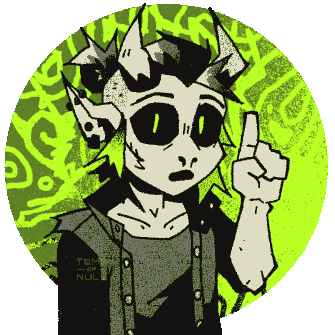
Notes:
- I’m a funny-animal-drawer first, brain-worm-haver third, and computer-toucher somewhere else down the list. There’s a better and more persistent way to make this tweak but its beyond my current scope of expertise. Some links I saved for later can be found here if you want to dig further yourself. [ X | X | X ] The method below only temporarily fixes the issue: whenever you boot up, log back in, or wake up your machine, you will have to redo part of this process. Good news: it isn’t too complicated.
- I’m running Linux Mint, so if your system uses a desktop environment that uses Wayland or something other than X11/xorg to handle windows and displays, this fix might not be much help to you.
- This is less of a tutorial and more of me making notes for myself and choosing to share them if they might be helpful for someone else too.
1] Get Display Info
My set-up’s got two monitors: the Huion pen display, and a bog standard display.
I know I have my Huion display plugged into one of my computer’s display ports, and I have my boring second monitor plugged into my computer’s only HDMI port.
I’m gonna open up terminal and ask xrandr to tell me some basic info about the monitors I have plugged in right now. I just need to figure out the names the computer knows those ports and monitors by so the next step goes smoothly.
“Hey xrandr, can you show me what display info you have [—query] by [|] searching for things [grep] marked as connected [‘\bconnected\b’]?”
And here’s what xrandr’s given me. Your results will look different depending on what your set-up looks like. For me, it looks like the port the Huion is plugged into is just called “DisplayPort-1”, and the name of the port my boring monitor is plugged into is named “HDMI-A-0”.

2] Figuring Out Input
Next, I’m going to talk to one of xrandr’s siblings: xinput.
“Hey xinput, show me the input devices.”
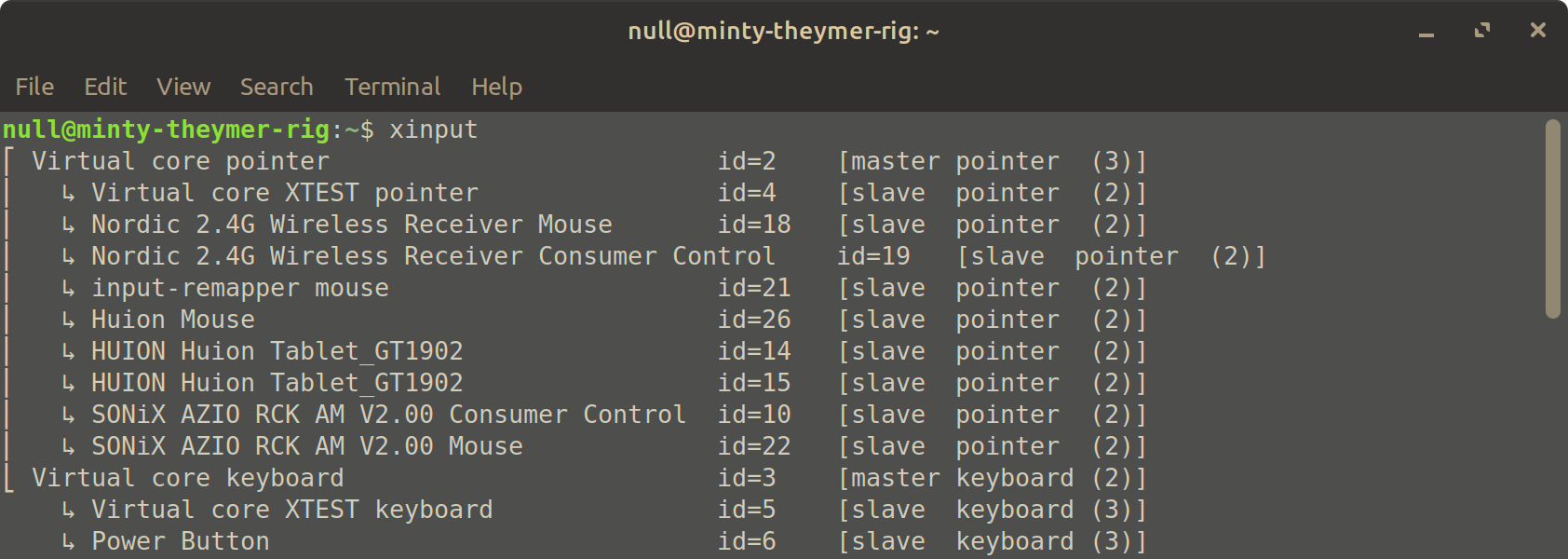
I only need to worry about the stuff under “Virtual core pointer”.
HUION Huion Tablet_GT1902 [both of them] are the Kamvas Pro 19. I need their IDs, which in my case is 14 and 15.
3] Remapping Input
Now that I know the names of our display’s ports and input, I can tell xinput to remap touch to just the Huion tablet screen, instead of taking both of my displays into account when handling touch input.
xinput map-to-output 15 DisplayPort-1
“Ok xinput, can you map the inputs coming from “HUION Huion Tablet_GT1902” (both with the IDs 14 and 15) to the display hooked up the the first display port, that way out output shows up only on that display?”
And then we’re should be good to go!
IF TOUCH GOES WONKY
And assuming you didn’t swap what plugs into what on your computer, simply run those two commands again. For me, I opted to bash it.
BONUS: Bash It Better
To make things easier when xinput “forgets” these mapping tweaks, I shoved this into .bashrc. TL;DR: .bashrc is a little hidden file with commands that run automatically whenever you open terminal.

Notes:
- This requires basic “how to poke around terminal” knowledge.
- Again, this isn’t an ideal fix. This is just a band-aid till I get around to understanding how to make these changes persistent/permanent.
- This is, to me, the better workaround than what I had put in this journal originally, which involved just making a bash script that had to be executed manually. With this route, all you gotta do is CTRL+ALT+T and then that script is run the second terminal pops up on screen.
- For the older previous version of this section, check this link.
1] Edit .bashrc
I’m going to edit this file in terminal. If you know what you’re doing, use whatever text editor you want. However, because I am [RANDOM INSULTING NOUN HERE], I’ll be using nano.
Then hit enter. Here’s what comes up for me:
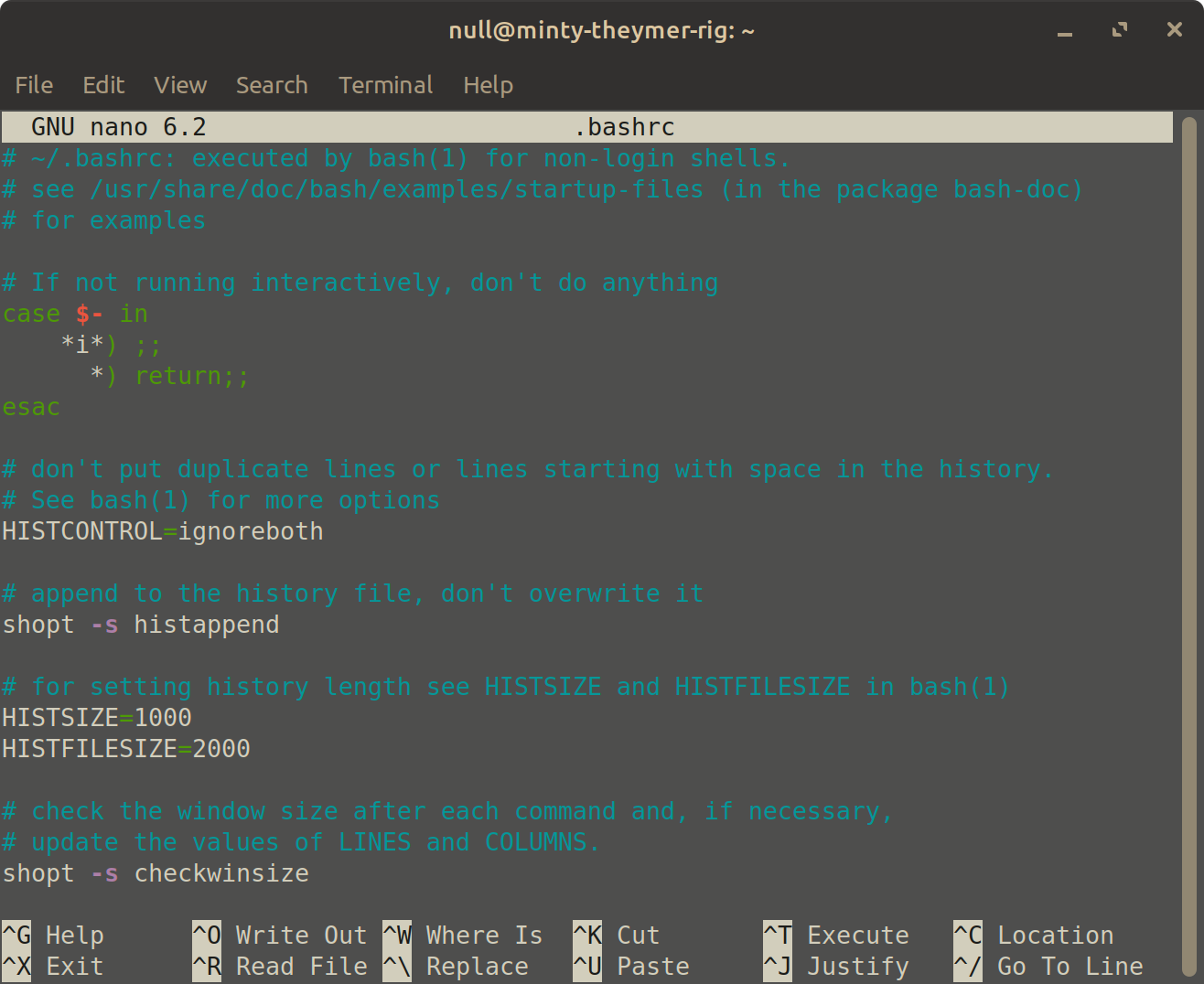
If all the text is making you panic, don’t: we’re going to be ignoring pretty much all of this. With the arrow keys, scroll all the way down to the bottom of the file. There, add the following.

Note:
- Be sure to replace the IDs and port names with the ones that match your set up.
# These commands fix the touch issue with the
# Huion Pro 19 when using multiple displays.
xinput map-to-output 14 DisplayPort-1
xinput map-to-output 15 DisplayPort-1
echo "touchy time"
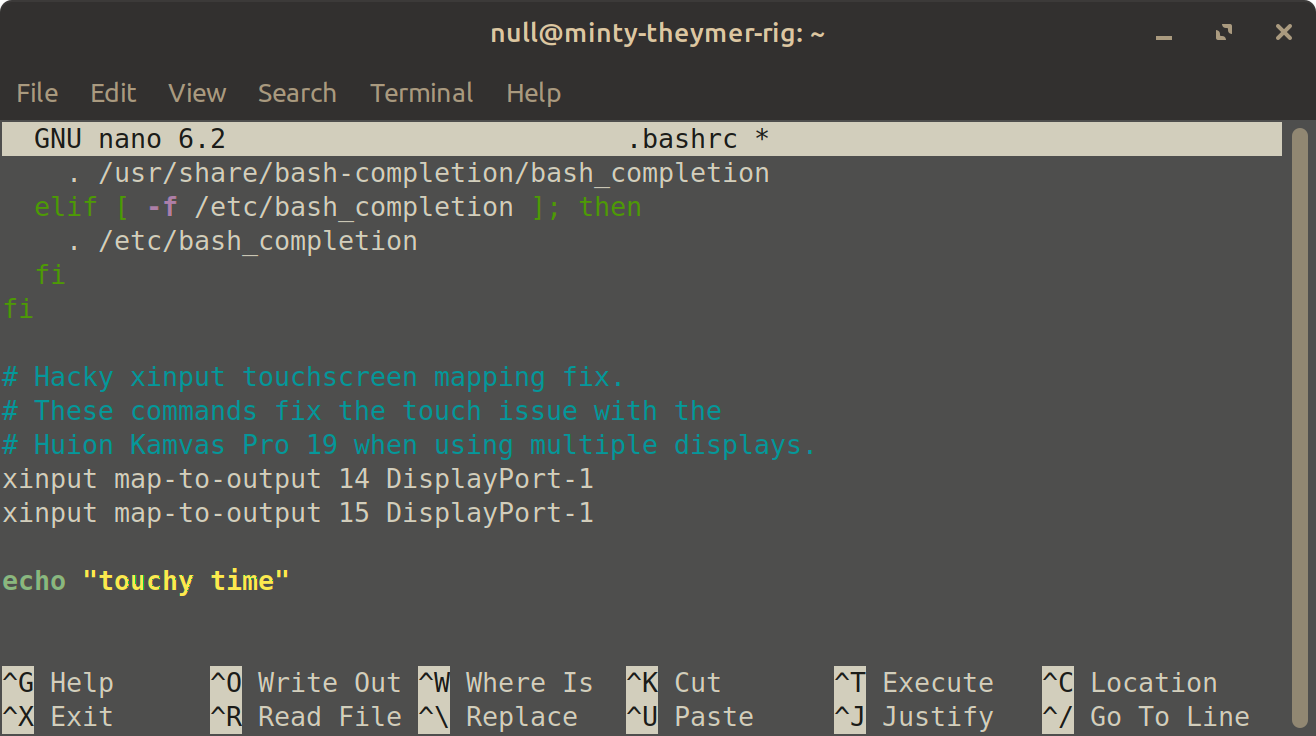
Stuff should look something like that.
2] SAVE IT
Hit CTRL+O to “write out” the file, which is the old timey way of “saving” a file.
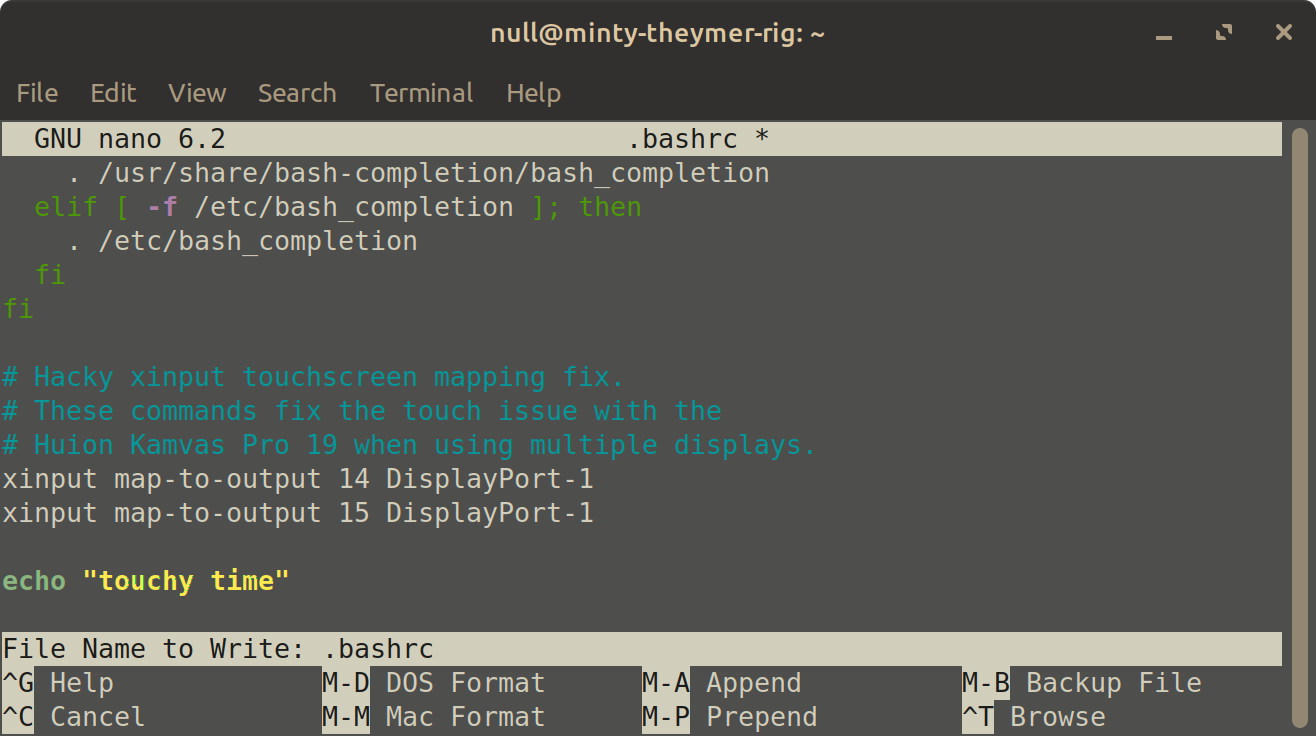
Don’t worry about changing the name of the file, just hit enter if this comes up. And from there hit CTRL+X to exit.
3] Test It
Close your current terminal window and hit CTRL+ALT+T to open a new terminal window. If “touchy time” appears at the top like this and touch is working right, then yay! It worked. Whenever xinput acts up, just open terminal and you should be good to go.
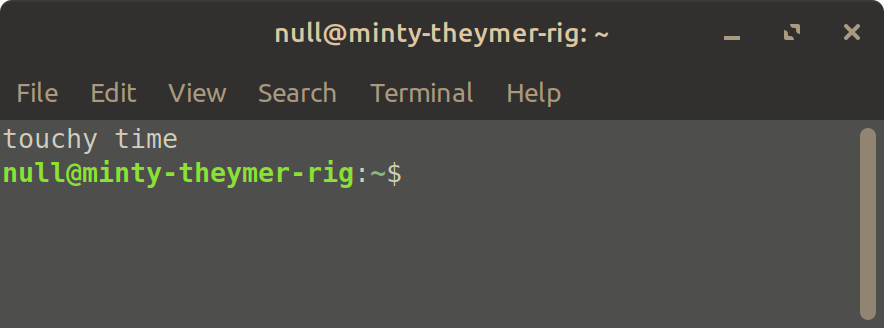

Note:
- If you don’t want the “touchy time” text showing up every time you open terminal, no worries, just omit echo “touchy time”.
BONUS: Krita Tweaks
If you also find it annoying when you get weird stray marks while drawing or pinching to zoom/pan, disable Touch Painting.
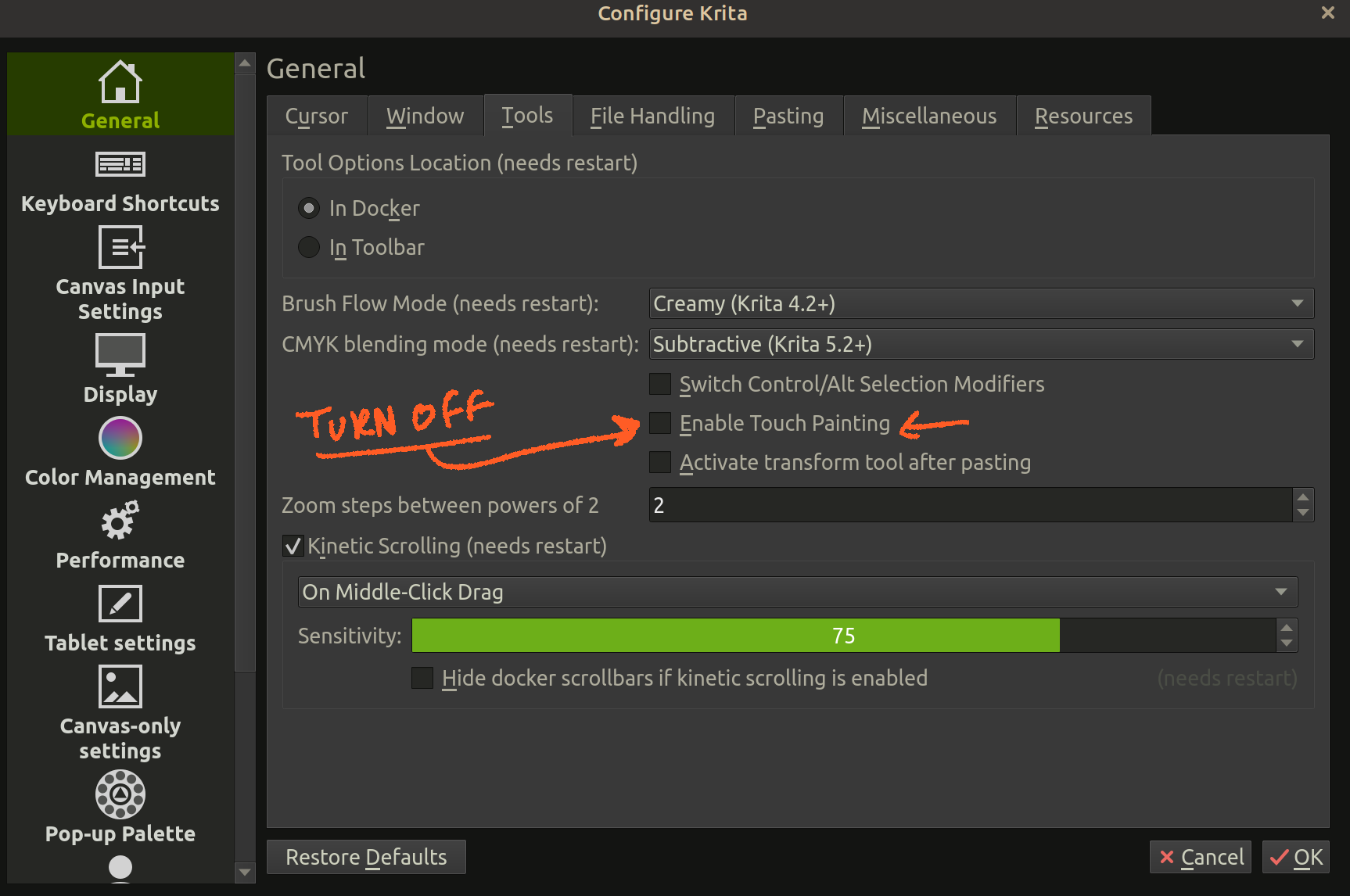
And finally, I can use this thing.
Tablet in Action
Drawing in Krita, the stylus is lovely; light pressure is all that’s needed to register a gentle pen stroke on the canvas. It si a little less sensitive than the Apple Pencil, but not by much. I found myself having to adjust the pressure covers on most of my custom brushes I made on my Surface Pro 8 to accommodate the difference in sensitivity.
The parallax between the stylus tip and cursor on screen is virtually non existent. If you are being very particular, the cursor is only a hair off from the true point of the stylus nib, and increases very, very slightly as you reach the edge of the screen
The pen hover distance is also as it ought to be—not too limited to be tedious nor too broad to feel unwieldily.
Of the two styli, I personally prefer the bigger of the two. For me its a bit more ergo friendly, and the extra button on the body of the device is useful.
The satin finish of the screen paired with the felt nib gives a subtle tooth to feel of laying strokes with the device. I’d compare it to drawing on smooth sketch paper. And while the finish does give a slight blur to the screen like a mild anti-aliasing effect to the screen, once I was working I hardly noticed. The glass texture doesn’t create a color-noise effect to the pixels on screen like older Cintq models tend to have.
Once touch was mapped correctly, I ran into little issue. What issues I did have were not due to the tablet itself but Linux problems. On Mint, the experience is not as touch friendly as iPad OS or Surface Pro machines since support for that is still a work-in-progress to my understanding.
Thoughts for Now
Like a lot of things on Linux, don’t expect a plug-and-play experience even with official driver support. Skip the bundle with the keydial unless you want to try to take a shot at making it work.
When it works and is up-and-running, its a solid machine that is more than comfortable to work with. Truly a Wacom-like device without the Wacom price.
Sources
- Huion Graphics Tablet H610PRO | openSUSE Forum
- NoraCodes GitHub and the fedi user/s pointing me to this file.
Listening to: Shallow Dream by Cel Genesis
Reading: Krita Artists.org posts
Phase: Waxing Crescent
Weather: Hot n humid. Ugly part of summer around here.